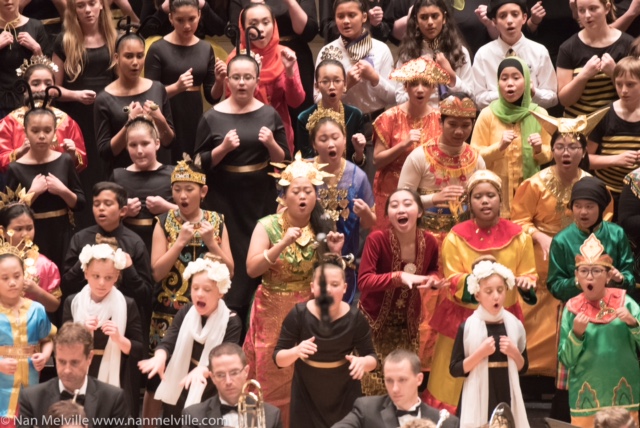Distinguished Concerts International New York (DCINY) presents Song/Play in Review
Distinguished Concerts International New York (DCINY) presents Song/Play
Charlotte Symphony Youth Orchestra (NC); Ernest Pereira, Director
Distinguished Concerts Orchestra and Distinguished Concerts Singers International
Cristian Grases, Guest Conductor
María Guinand, Guest Conductor
Alberto Grau, DCINY Composer-in-Residence
Stern Auditorium at Carnegie Hall, New York, NY
Saturday, June 17, 2017, 7 PM
Distinguished Concerts International New York (DCINY) presented an intriguing mix of French-“Spanish” music, music by Spaniards who studied in Paris, and one Spanish-born composer who has spent most of his life in Venezuela, working with young musicians.
The Charlotte Youth Symphony, ably conducted by Ernest Pereira, began with Chabrier’s evergreen orchestral rhapsody España, already so ubiquitous in its time (1883) that it was parodied by Satie a generation later as Españaña (1913). The players’ youthful enthusiasm was equaled by their instrumental ability. The notorious fortissimo outburst of the trombones made its (unintentionally?) humorous mark.
They followed with the Act II ballet music from Massenet’s opera Le Cid (1885). “Beginning of Act II ballets” were an onerous requirement for composers, so that members of Paris’ ultra-elite Jockey Club could have their intermission dinners (or clandestine affairs) and make it back to the opera house without missing anything of the actual opera. The five short sections reflect different regions of Spain, with appropriate musical symbols that represent the Frenchman’s “idea” of Spain, an obsession ever since Bizet’s Carmen (and even before) that would continue into the masterworks of Debussy and Ravel.
Then came two shorter works by Spanish composers who studied in Paris in the early twentieth century, where they were encouraged by their professors to develop their own nationalistic voices rather than try to recreate the sounds of “Impressionism.” Manuel de Falla’s Ritual Fire Dance, from his ballet El Amor brujo (Love, the Sorcerer, 1914/15) is a musical exorcism that has not lost its hypnotic power, and it was well-played here. Turina’s Orgia (Danzas fantasticas, Op. 22, 1919), an Andalusian farruca (dramatic flamenco dance usually performed by men), is preceded in the score by a line from the novel that inspired the work: “The perfume of the flowers merged with the odor of manzanilla, and from the bottom of raised glasses, full of the incomparable wine, like an incense, rose joy.” All of this was enjoyably audible in the performance.
After intermission came two works by the Spanish-born Alberto Grau (b. 1937), who has spent most of his life in Venezuela developing high-quality choral works for children’s choirs. Venezuela is of course noted for its astonishing music education program El Sistema, which has produced the conductor Gustavo Dudamel, among many others.
The first work, La Doncella (The Maiden, 1978), is a short fable about a girl whose beauty wins over the sun, moon, and stars, when other, wealthier suitors are rejected by them. Mr. Grau’s characteristic shifting metrics enlivened the score, and they posed no problem either to orchestra or choir, conducted by Cristian Grases, a student of Mr. Grau. An English-language narration was provided on stage, very expressively, to illumine the suite of dances.
During the switch-out of choruses, a brief interview was held with Mr. Grau and his wife Maria Guinand (the next conductor on the program) who translated charmingly for him.
Then came the World Premiere of La Avispa Brava (The Angry Wasp), which Mr. Grau puckishly claims is autobiographical, though that is hard to believe. It is a moral fable about the insect (i.e. person) who is so consumed by anger that she cannot escape from a house that has all its windows and doors open. She falls into a glass of water “so small even a mosquito could save itself from it,” but our angry insect instead rages and drowns. Ms. Guinand’s supportive, energetic touch kept the extremely young singers in line, with more of the complicated rhythms, and lots of eurhythmic activity: clapping, stomping, vocal whooshes and slides. There were charming “group solos” and all the choristers were wearing insect antennae, wings, and various costume details. Were they musically “perfect” at every moment? Of course not, but what valuable exposure they are getting at such a young age.
The message of La Avispa Brava is a valuable one, not only for children’s growth and maturity, but for the adult world as well, as Ms. Guinand suggested during the interview.

